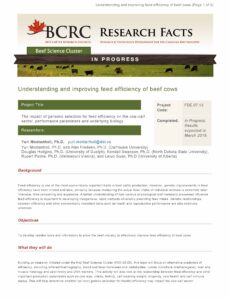Understanding and Improving Feed Efficiency of Beef Cows
Feed efficiency is one of the most economically important traits in beef cattle production. However, genetic improvements in feed efficiency have been limited and slow, primarily because measuring the actual feed intake of individual animals is extremely labor intensive, time consuming and expensive. A better understanding of how various physiological and metabolic processes influence feed efficiency is important to developing inexpensive, rapid methods of reliably predicting feed intake. Genetic relationships between efficiency and other economically important traits such as health and reproductive performance are also relatively unknown.
Funded by the National Check-off and Canada’s Beef Science Cluster, researchers are currently working to develop needed tools and information to allow the beef industry to effectively improve feed efficiency of beef cows.
To learn more, see the fact sheet.
Click here to subscribe to the BCRC Blog and receive email notifications when new content is posted.
The sharing or reprinting of BCRC Blog articles is welcome and encouraged. Please provide acknowledgement to the Beef Cattle Research Council, list the website address, www.BeefResearch.ca, and let us know you chose to share the article by emailing us at info@beefresearch.ca.
We welcome your questions, comments and suggestions. Contact us directly or generate public discussion by posting your thoughts below.
